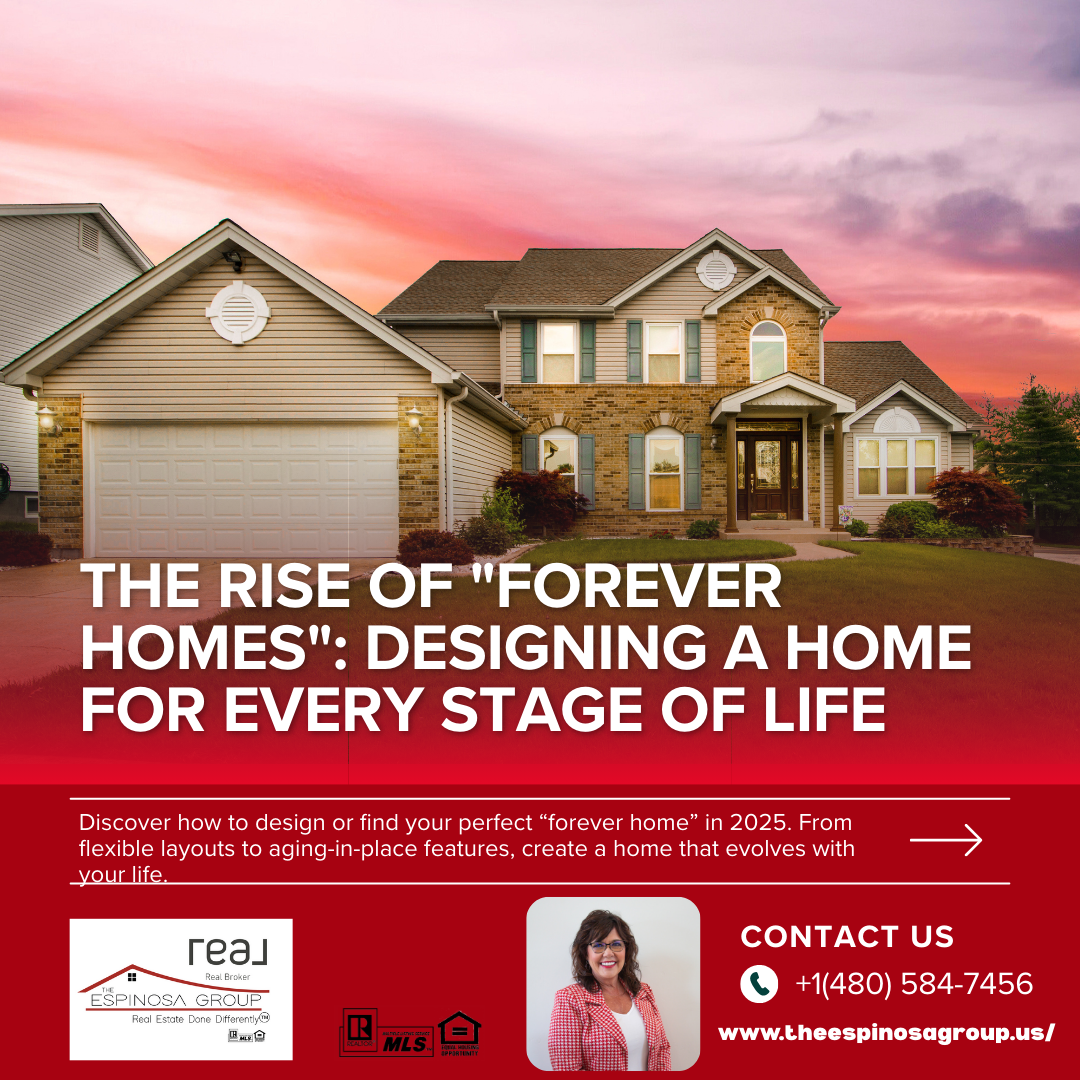The Rise of "Forever Homes": Designing a Home for Every Stage of Life
As homebuyers look toward long-term living solutions, the concept of a "forever home" has become increasingly popular. A forever home is designed to adapt to a homeowner’s changing needs over time, incorporating features that promote comfort, accessibility, and functionality through all stages of life. Whether you're a young family, an empty nester, or planning for aging in place, here’s how to create a home that grows with you.
What Makes a Home a "Forever Home"?
A forever home is more than just a place to live—it’s a space that evolves with your lifestyle. Key elements include:
-
Flexible Floor Plans: Open layouts that allow for easy modifications as needs change.
-
Single-Level Living: Reducing reliance on stairs for future accessibility.
-
Universal Design Features: Wider doorways, no-step entries, and accessible bathrooms.
-
Smart Home Technology: Automated systems for lighting, security, and climate control.
-
Energy Efficiency: Sustainable materials and energy-saving appliances to reduce costs over time.
Aging-in-Place Features for Longevity
Many homeowners want to stay in their homes as they age. Consider these aging-friendly upgrades:
-
Barrier-Free Showers: Walk-in showers with grab bars and seating.
-
Lever-Style Handles: Easier to operate than traditional doorknobs.
-
Well-Lit Pathways: Indoor and outdoor lighting to improve visibility.
-
Adjustable Counter Heights: Accommodating mobility challenges.
-
First-Floor Primary Suites: Convenient access to essential living spaces.
Designing for Growing Families
A home that can accommodate a growing family is key to its longevity. Look for:
-
Convertible Spaces: Rooms that can transition from a nursery to a study or guest room.
-
Ample Storage: Built-ins, walk-in closets, and multi-purpose furniture.
-
Durable Materials: Kid-friendly flooring and easy-to-clean surfaces.
-
Outdoor Living Areas: Play-friendly spaces that evolve into entertaining areas.
Smart Design for Multi-Generational Living
As multi-generational living becomes more common, homes need adaptable spaces:
-
In-Law Suites: Separate living areas with private entrances and bathrooms.
-
Dual Kitchen Spaces: Additional kitchenettes for independent living.
-
Soundproofing: Insulation to create privacy between family members.
-
Zoned Heating & Cooling: Personalized comfort for different areas of the home.
Investing in Timeless Upgrades
A forever home should be built with long-lasting materials and styles:
-
Classic, Neutral Design: Avoid trends that may feel outdated in a few years.
-
Hardwood or Luxury Vinyl Flooring: Durable and low-maintenance options.
-
Energy-Efficient Windows & Doors: Reduce utility bills and increase comfort.
-
High-Quality Kitchen & Bathroom Finishes: Areas that add long-term value.
Final Thoughts
A forever home is an investment in both comfort and stability. By incorporating flexible layouts, smart technology, and aging-in-place features, you can create a home that suits your needs today—and for decades to come.
📢 Thinking about finding or designing your forever home? Let’s chat! I can help you find the perfect space to fit your long-term vision. Reach out today! 🏡✨
Categories
- All Blogs (185)
- Home Buying Process (17)
- Home Buying, Selling, and Investing Tips (50)
- how to buy a house (9)
- How to sell your house (11)
- Importance of a Real Estate Agent (1)
- real estate investment strategies (10)
- Real estate Market in Arizona (5)
- Selling a home (18)
- STAGING DIFFERENTLY (32)
- Staging tips for selling (17)
- THE AGENT (4)
Recent Posts












